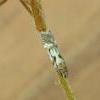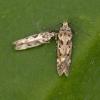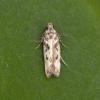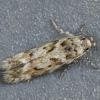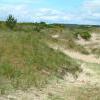35.134 Caryocolum blandelloides Karsholt, 1981
Status and Distribution
First discovered in Britain on 23rd August 1994 at Coul Links, VC107. Very local and restricted to extensive coastal dunes on the eastern side of northern Scotland. On 7th August 2024, one was attracted to light at Magilligan SAC, Northern Ireland.
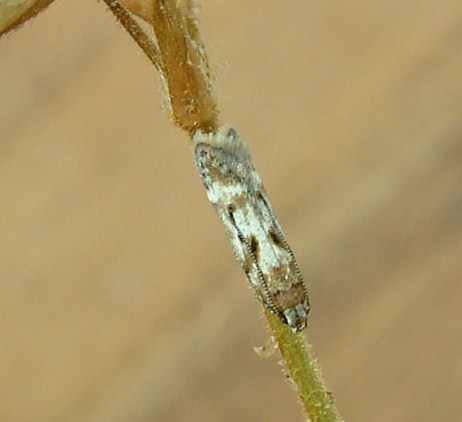
Provisional map
Foodplant and Larval Feeding Signs
Cerastium fontanum (common mouse-ear), see plant distribution map. In Europe on Cerastium arvense strictum (a sub-species of field mouse-ear not found in the British Isles) and Cerastium semidecandrum (little mouse-ear).
There are no obvious signs of larval feeding.
Habitat
Finding the Moth
Larva: no obvious signs of larval feeding, the larva remaining inside the flower/seedheads. When ready for pupation it drops to the ground and constructs a small dense white silk cocoon on the surface, covering the cocoon with sand and minute vegetation fragments.
Adult: flies at dusk and at night and comes to light.
Similar Species
Generally smaller than C. blandella (which is unknown in northern Scotland), shows less contrast in the forewing markings, the black patch on the costa is half as wide and the antennae are less distinctly ringed with light and dark.
C. blandulella has a more distinct black costal block.
In comparison to C. huebneri and C. kroesmanniella, the black patches at the basal part of the wings in C. blandelloides are fused into a slender streak, the costal and dorsal white spots are separated by an ochreous patch and the forewing is less extensively dusted with fuscous scales.
Single brooded in August. Very limited number of sightings of the adults.
Earliest: 12th August 2004 (VC95)
Latest: 3rd September 2002 (VC95)

